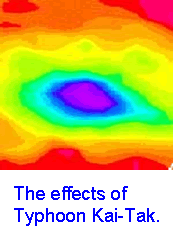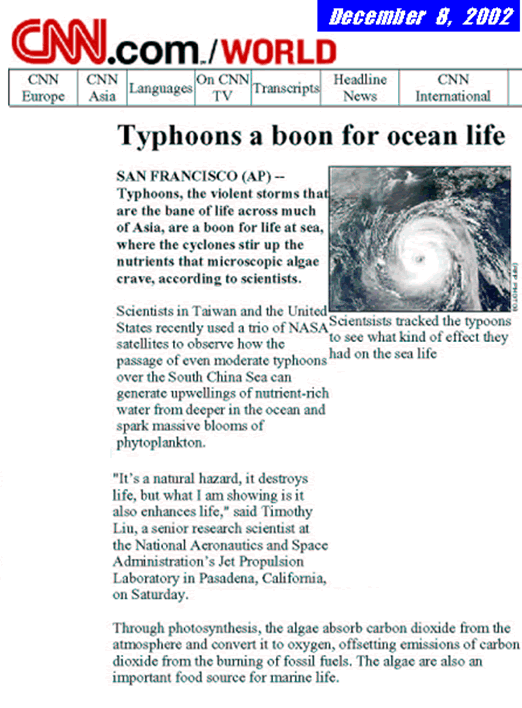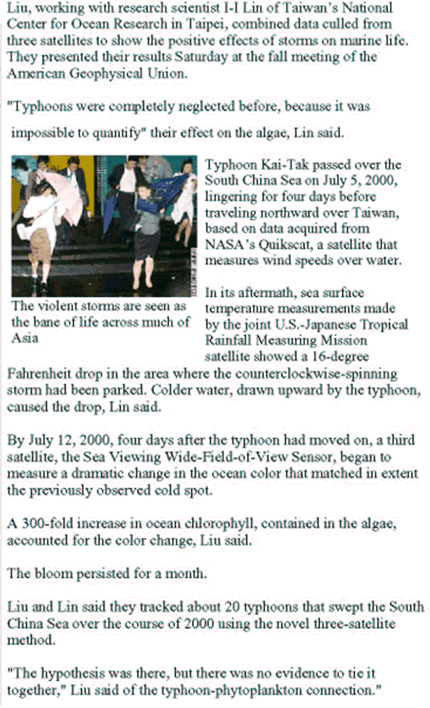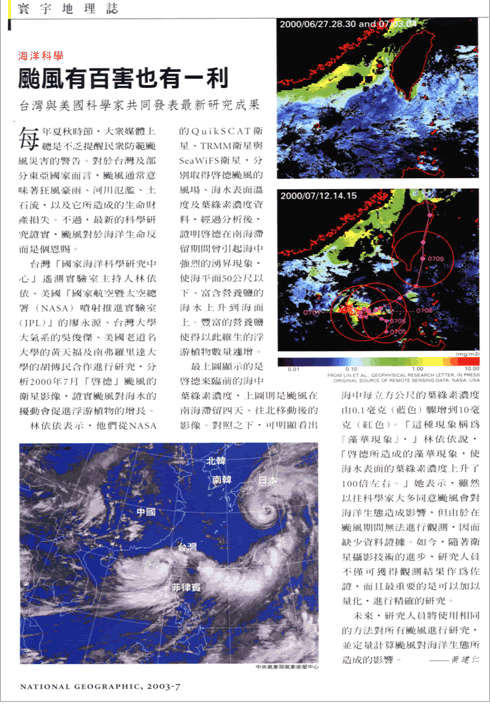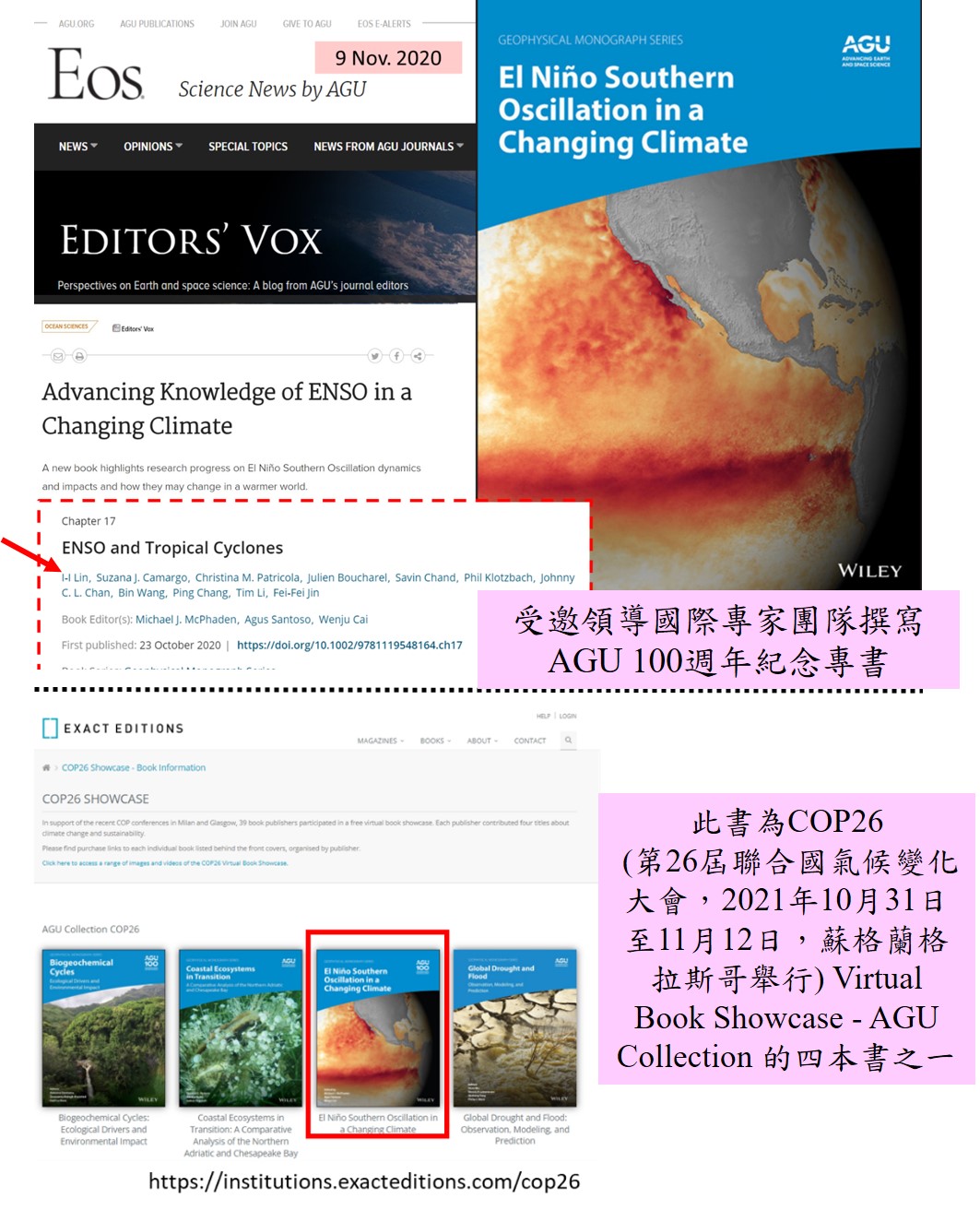
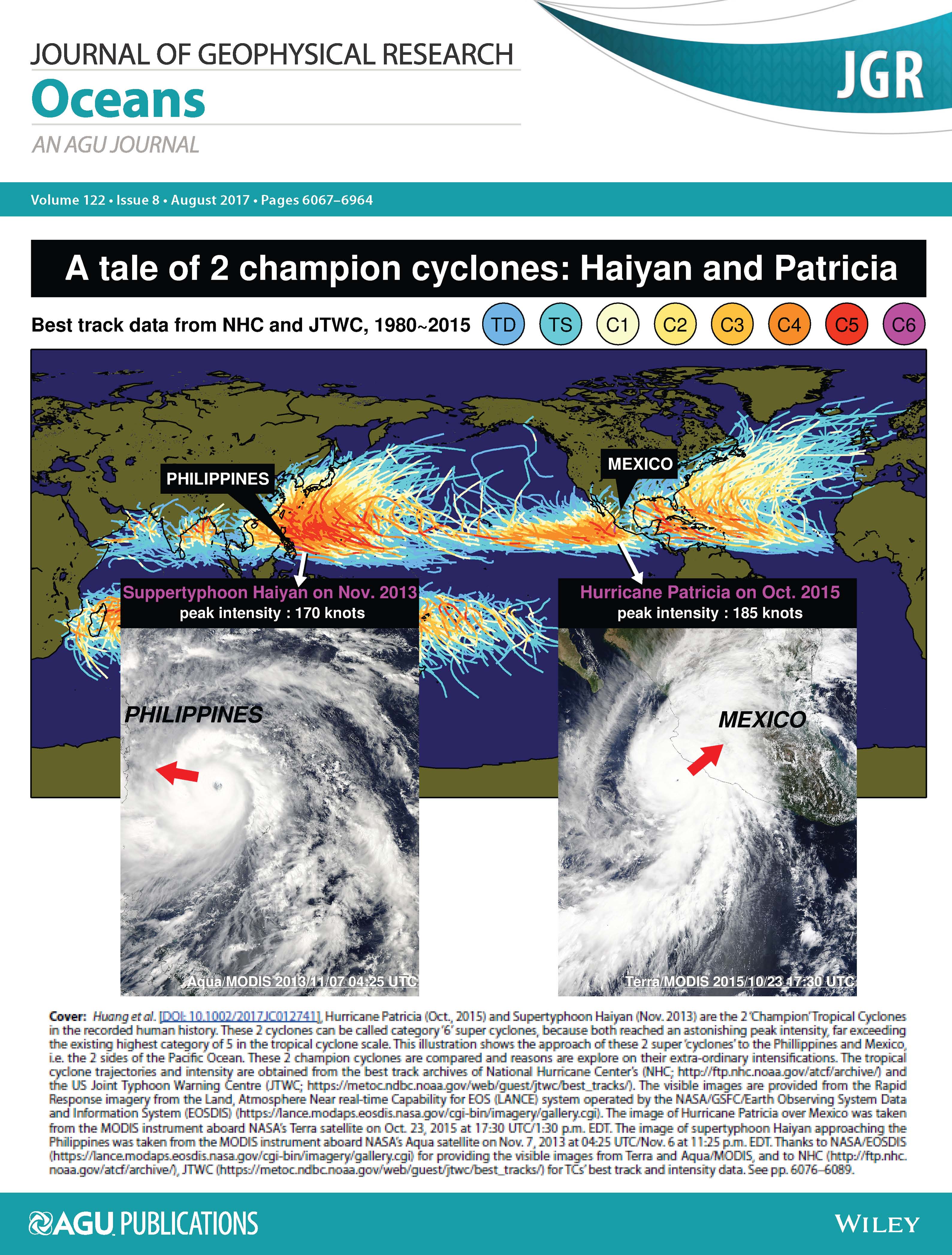
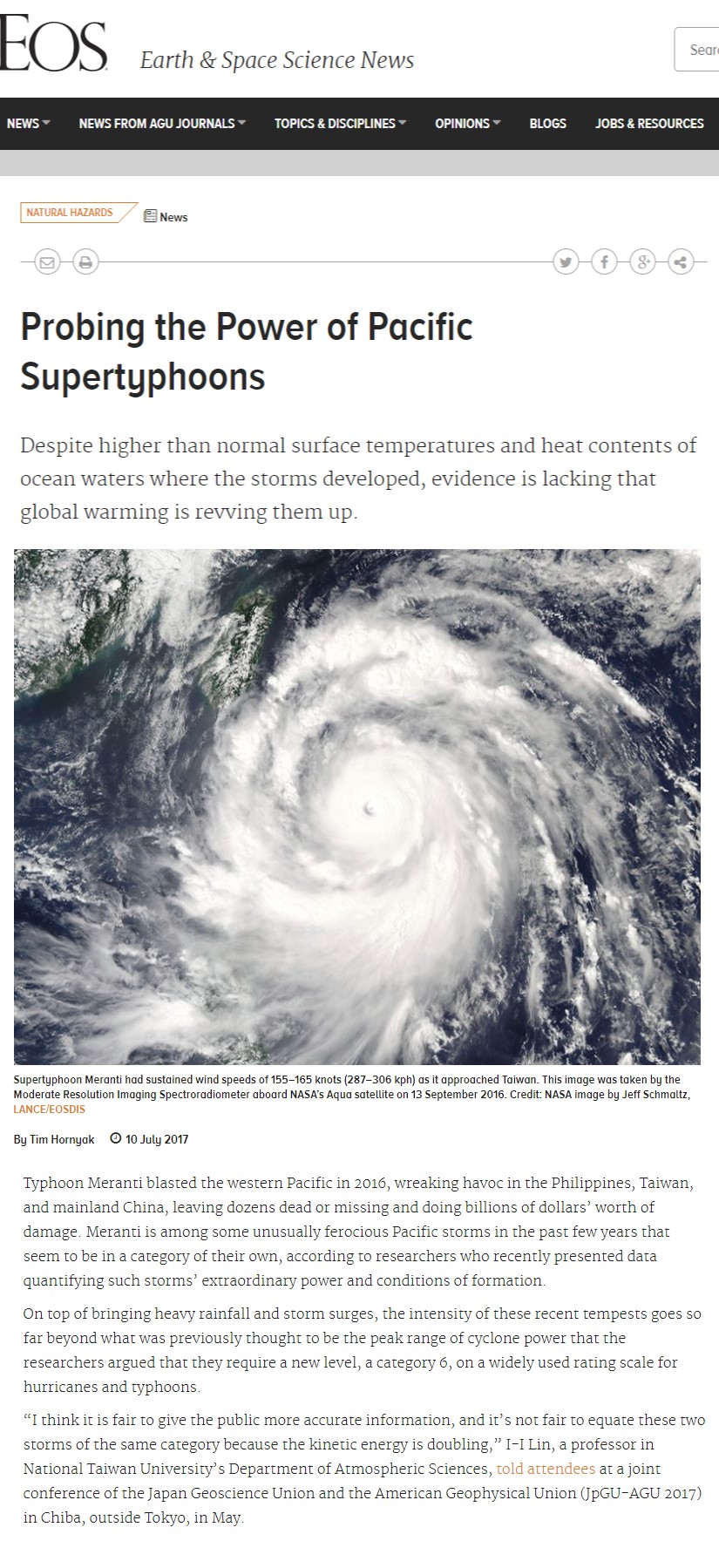
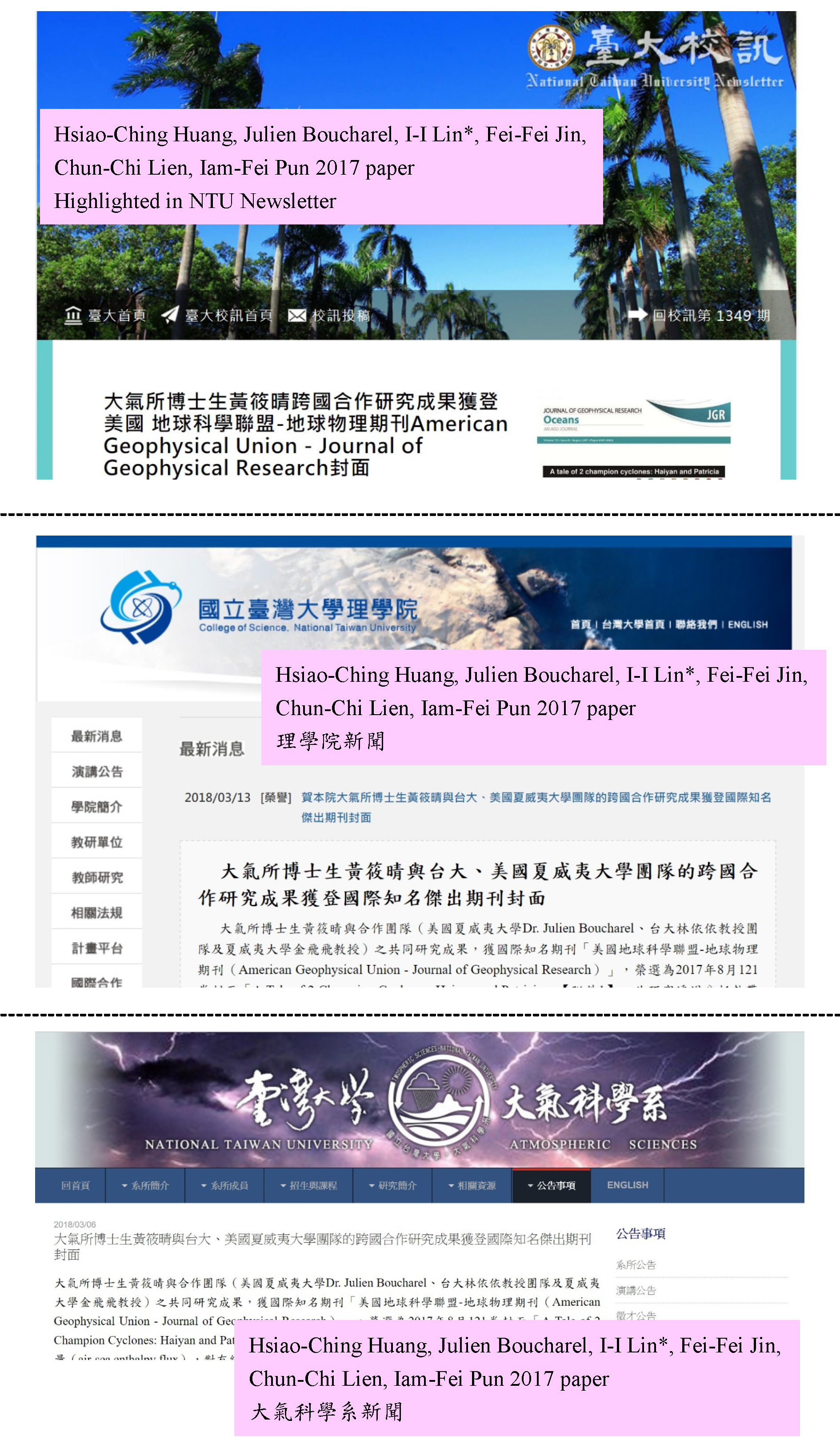
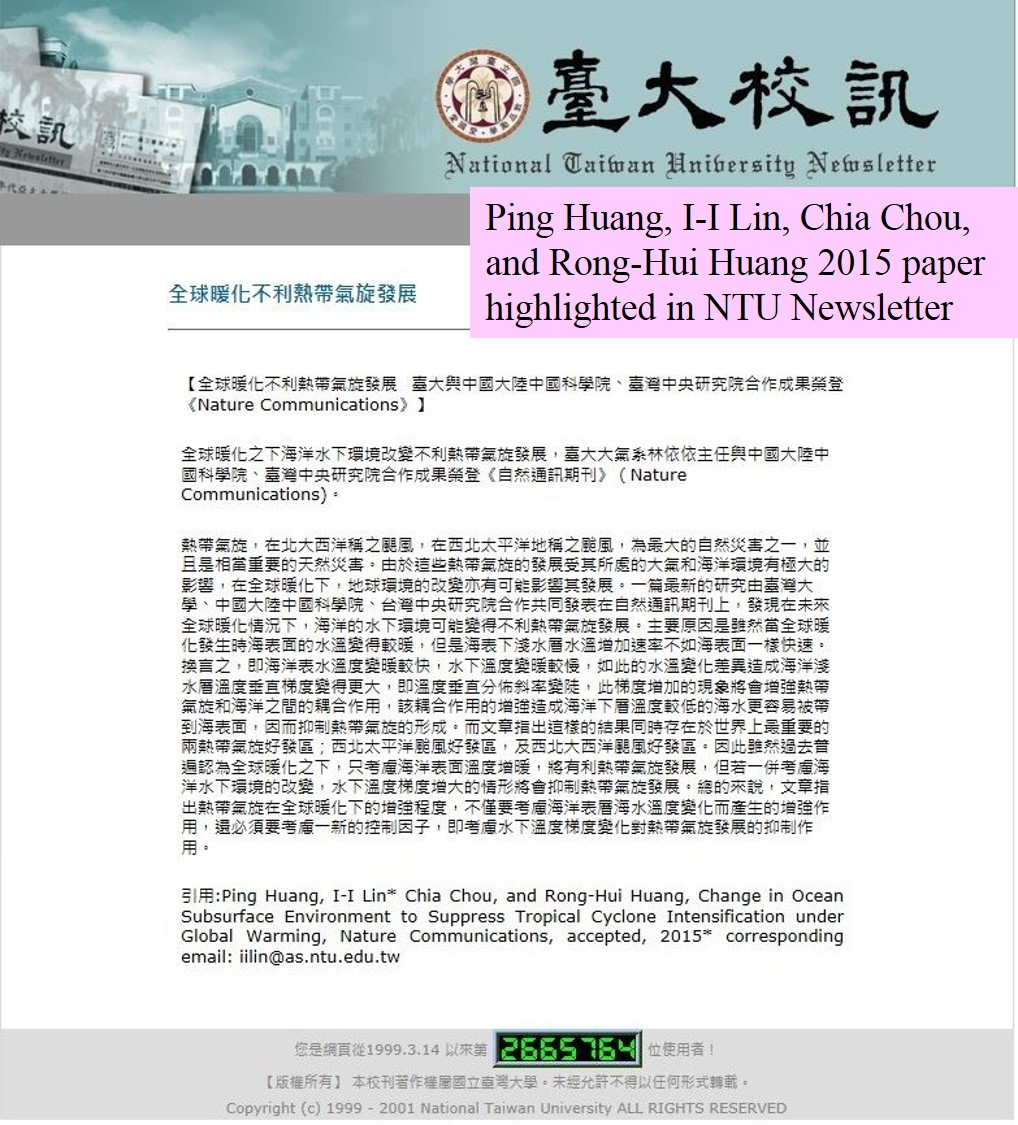

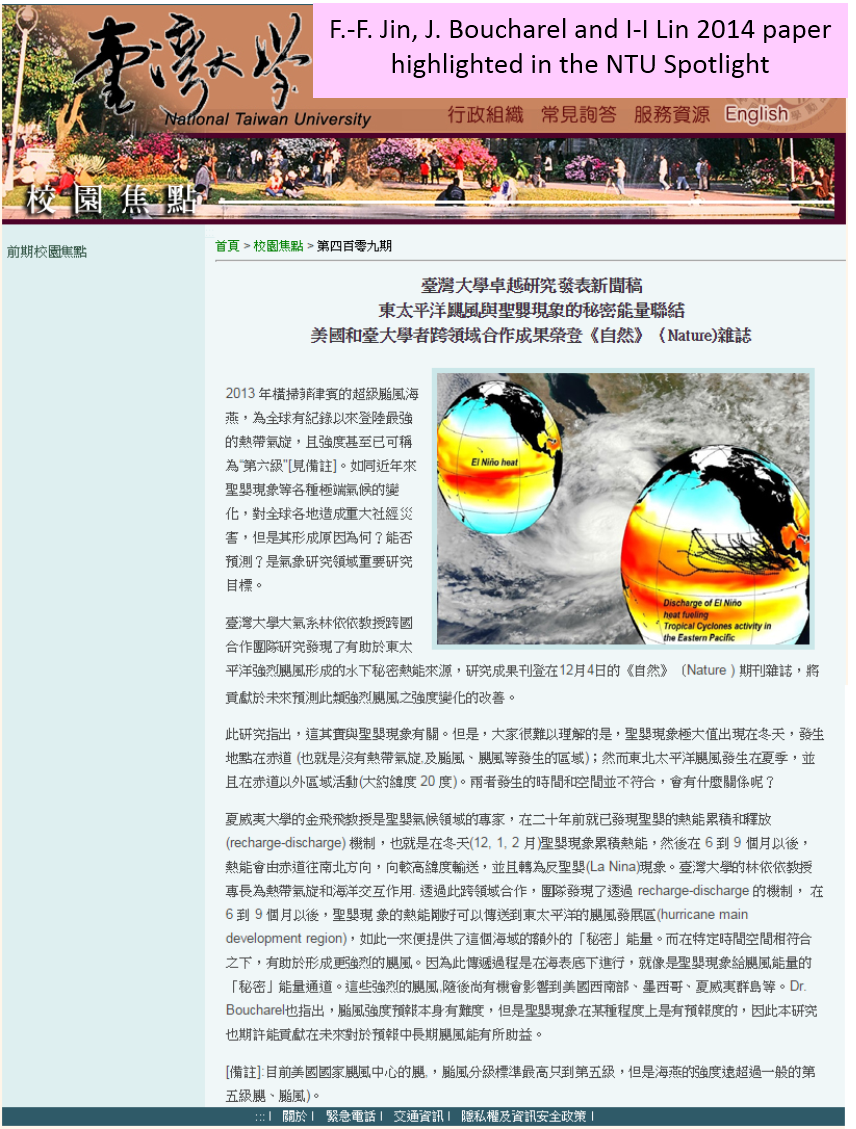
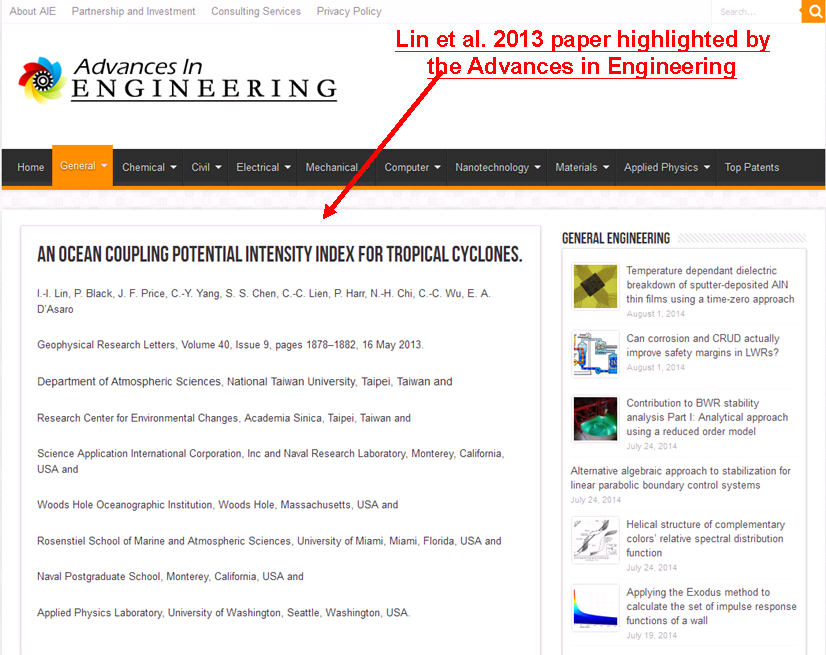

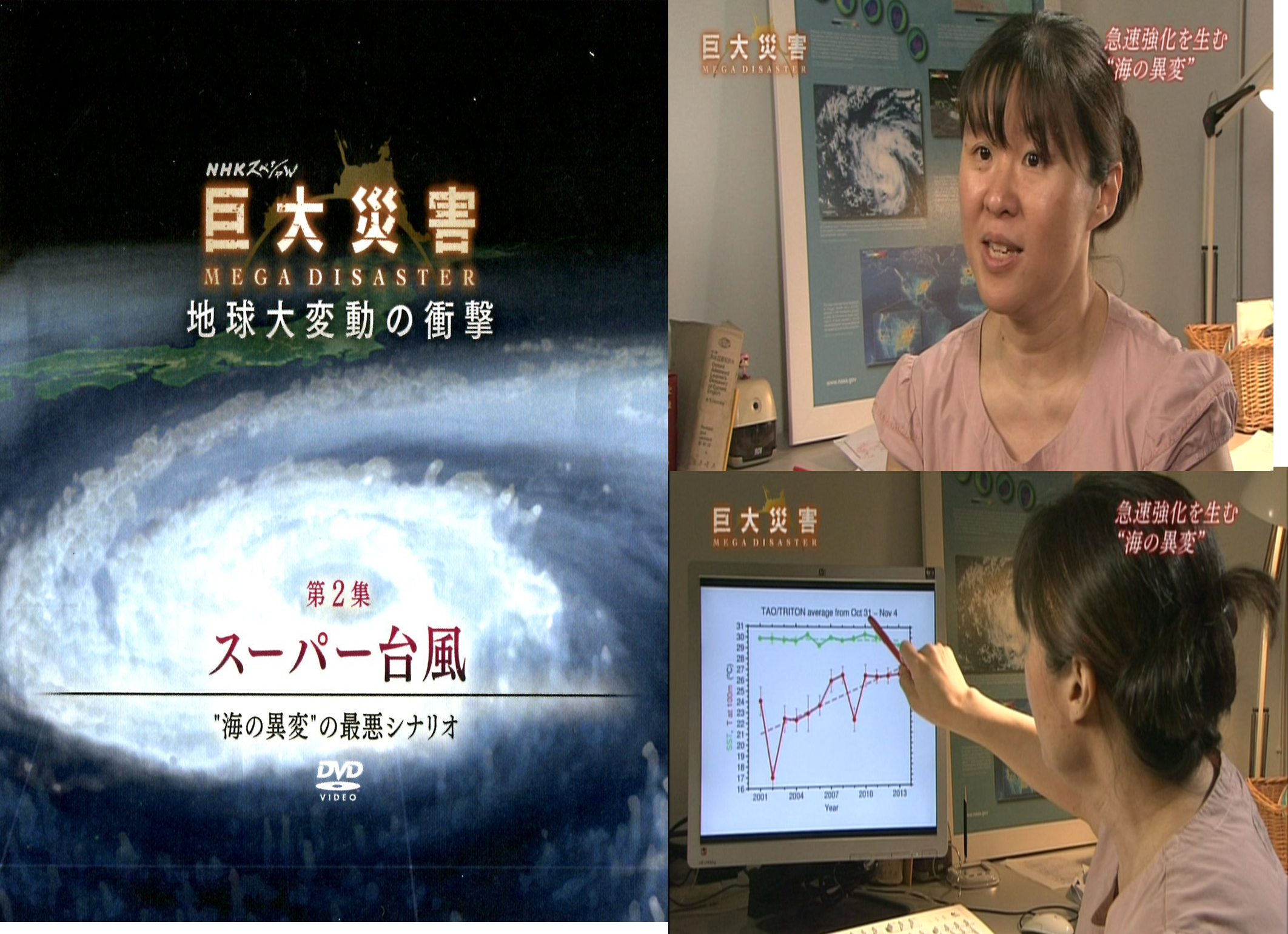
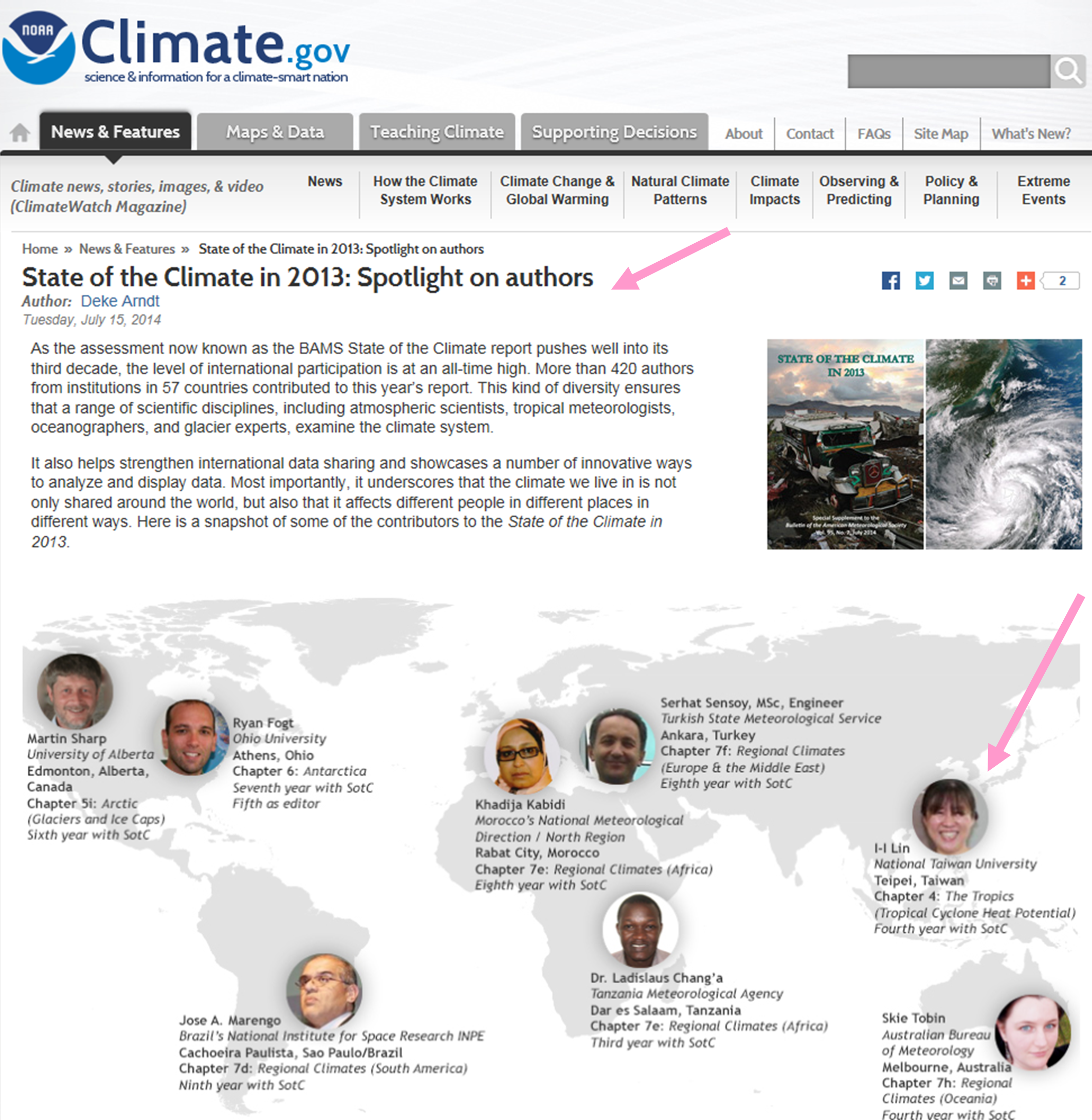

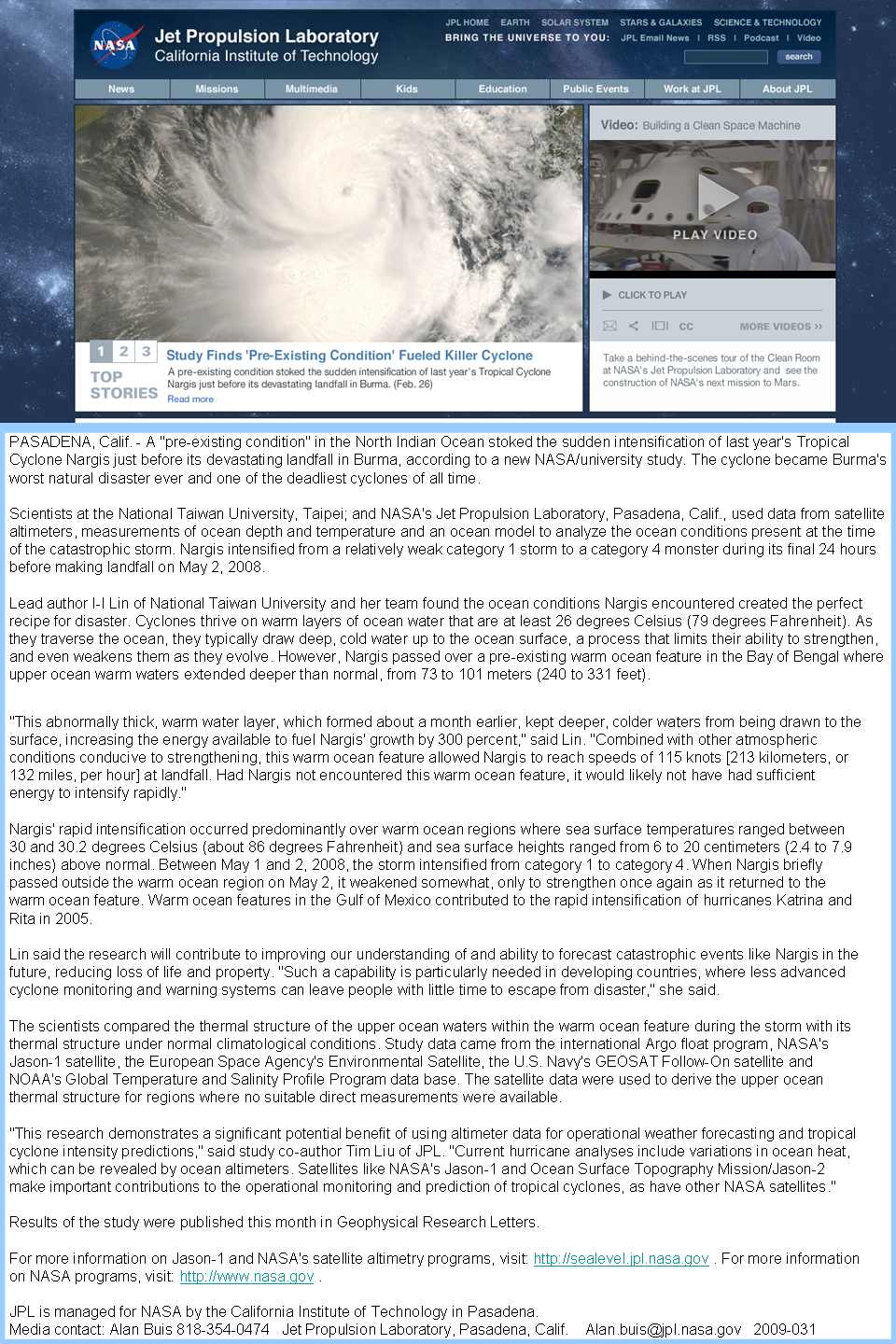

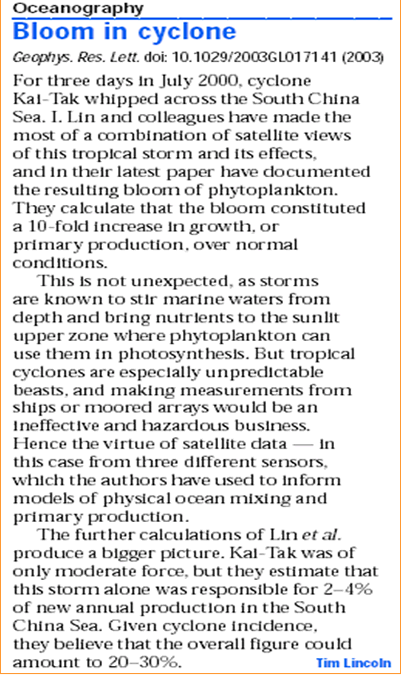
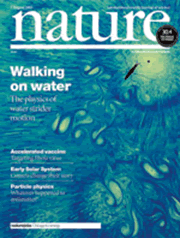
7 August 2003
Vol 424 No 6949 PP 630
Oceanography :
Bloom in Cyclone
By Tim Lincoln,
NATURE Magazine

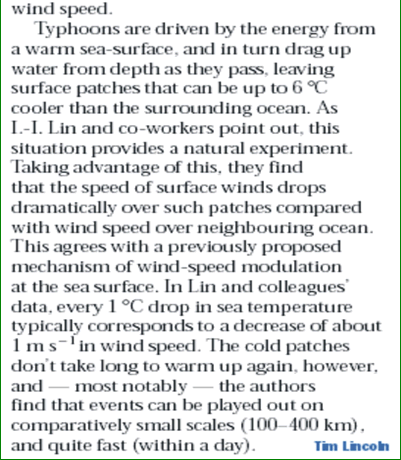
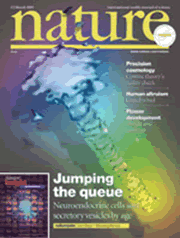
13 March 2003
Vol 422 No 6928 pp 132
Atmospheric Science:
Quick, quick, slow
By Tim Lincoln,
NATURE Magazine
San Francisco, California, 7 December 2002
The Fertilisation of the Sea by a Tropical Cyclone:
I LIN , T LIU, C WU, G WONG, C HU
Typhoons a boon for ocean life, observations from
satellites show
By Andrew Bridges, Associated Press( 美聯社 )
SAN FRANCISCO -- Typhoons, the violent storms that are the bane of life across much of Asia, are a boon for life at sea, where the cyclones stir up the nutrients that microscopic algae crave, scientists said Saturday. Scientists in Taiwan and the United States recently used a trio of NASA satellites to observe how the passage of even moderate typhoons over the South China Sea can generate upwellings of nutrient-rich water from deeper in the ocean and spark massive blooms of phytoplankton. "It's a natural hazard, it destroys life, but what I am showing is it also enhances life," said Timothy Liu, a senior research scientist at the National Aeronautics and Space Administration's Jet Propulsion Laboratory in Pasadena. Through photosynthesis, the algae absorb carbon dioxide from the atmosphere and convert it to oxygen, offsetting emissions of carbon dioxide from the burning of fossil fuels. The algae are also an important food source for marine life. Liu, working with research scientist I-I Lin of Taiwan's National Center for Ocean Research in Taipei, combined data culled from three satellites to show the positive effects of storms on marine life. They presented their results Saturday at the fall meeting of the American Geophysical Union. "Typhoons were completely neglected before, because it was impossible to quantify" their effect on the algae, Lin said. Typhoon Kai-Tak passed over the South China Sea on July 5, 2000, lingering for four days before traveling northward over Taiwan, based on data acquired from NASA's Quikscat, a satellite that measures wind speeds over water. In its aftermath, sea surface temperature measurements made by the joint U.S.-Japanese Tropical Rainfall Measuring Mission satellite showed a 16-degree Fahrenheit drop in the area where the counterclockwise-spinning storm had been parked. Colder water, drawn upward by the typhoon, caused the drop, Lin said. By July 12, 2000, four days after the typhoon had moved on, a third satellite, the Sea Viewing Wide-Field-of-View Sensor, began to measure a dramatic change in the ocean color that matched in extent the previously observed cold spot. A 300-fold increase in ocean chlorophyll, contained in the algae, accounted for the color change, Liu said. The bloom persisted for a month. Liu and Lin said they tracked about 20 typhoons that swept the South China Sea over the course of 2000 using the novel three-satellite method. "The hypothesis was there, but there was no evidence to tie it together," Liu said of the typhoon-phytoplankton connection.

New research findings from NASA's Quick Scatterometer (QuikScat) satellite and its SeaWinds instrument have documented for the first time the significant effect typhoons have on the ocean and ocean life. The findings will be presented during a press conference highlighting recent research and findings from QuikScat at the fall meeting of the American Geophysical Union on Saturday, December 7, at 8 a.m. Pacific Time.
A team of researchers from NASA's Jet Propulsion Laboratory, Pasadena, Calif., and the National Center for Ocean Research, Taipei, Taiwan, used satellite data to document the thermal and biological responses created by typhoon Kai-Tak in the northern part of the South China Sea in early July 2000. The team analyzed data from QuikScat in conjunction with data from NASA's Tropical Rain Measuring Mission and its Sea Viewing Wide-Field-of-View Sensor (SeaWifs).
The typhoon's passing stirred up the sea, causing sea surface temperatures to drop drastically and increasing the level of ocean chlorophyll by 300 times within a few days. The resulting phytoplankton blooms were evident for up to a month after the typhoon had passed.
"Typhoons can take a devastating economic and human toll," said Dr. W. Timothy Liu, Quikscat project scientist at JPL. "Our research sheds new light on these violent storms, demonstrating how they can also nurture life, fertilizing the sea and creating a bounty of food for fish. The increased ocean productivity also affects Earth's carbon cycle and our climate."
